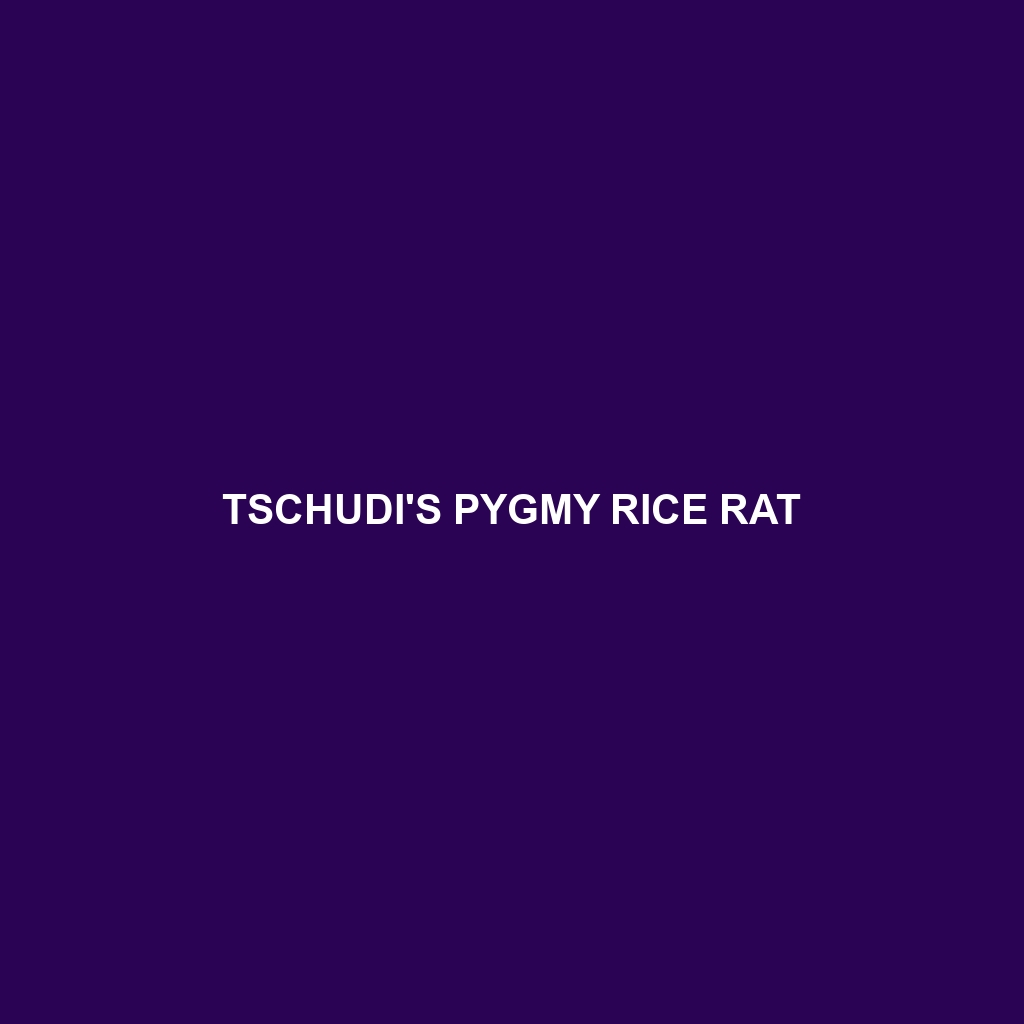Tschudi’s Pygmy Rice Rat – An In-Depth Species Description
Common Name: Tschudi’s Pygmy Rice Rat
Scientific Name: Oryzomys tschudii
Habitat
Tschudi’s Pygmy Rice Rat is primarily found in the humid environments of South America, specifically in regions such as the Amazon Basin, Peru, and parts of western Brazil. These small rodents thrive in marshy areas, reeds, and rice fields, which provide both shelter and an ample food supply. They prefer low-lying wetlands and areas with dense vegetation that offer protection from predators.
Physical Characteristics
Tschudi’s Pygmy Rice Rat is characterized by its small size, typically measuring about 10 to 15 cm in body length, with a tail that can be slightly longer than the body. The fur is primarily a soft, dark brown color with lighter underparts. One distinctive feature is the long, slender body and large eyes, which aid in foraging in low-light conditions. Its slightly rounded ears and long whiskers also enhance its sensory perception in its dense habitat.
Behavior
This species is primarily nocturnal, being most active during the night when it forages for food. Tschudi’s Pygmy Rice Rat is known for its agile movements, enabling it to navigate through dense vegetation and murky waters. They are excellent swimmers, which helps them escape predators and access aquatic food sources. Socially, these rodents tend to be solitary or found in small, loose groups, depending on resource availability.
Diet
Tschudi’s Pygmy Rice Rat primarily feeds on a diet consisting of seeds, grains, and aquatic plants. They are known to be particularly fond of rice, grains, and fruits, which align with their habitat in rice paddies and marshy areas. Their foraging behavior often involves gleaning food from the ground and using their sharp incisors to access tough plant material.
Reproduction
The reproductive habits of Tschudi’s Pygmy Rice Rat typically align with the wetter seasons when food is abundant. Breeding occurs throughout the year, with females capable of producing multiple litters each year. Each litter usually consists of 2 to 6 offspring, which are born blind and hairless. Maternal care is strong, with mothers nurturing and protecting their young until they are capable of independent living.
Conservation Status
Currently, Tschudi’s Pygmy Rice Rat is classified as Not Evaluated on the IUCN Red List. However, habitat destruction due to agricultural expansion poses a potential threat. Future assessments are necessary to monitor their populations and conservation needs effectively.
Interesting Facts
1. Tschudi’s Pygmy Rice Rat is named after the Swiss zoologist Johann Jakob von Tschudi.
2. This species plays an essential role in seed dispersal within its habitat, contributing to the health of its ecosystem.
3. Despite their small size, they possess a high reproductive rate, which allows them to quickly populate areas conducive to their survival.
Role in Ecosystem
As both prey and seed dispersers, Tschudi’s Pygmy Rice Rat holds a significant role in the ecosystem. By feeding on seeds and plants, they help maintain plant diversity in their habitat. Additionally, they serve as food for various predators, including birds of prey and larger mammals, thus enriching the food web and promoting biodiversity in their environment.
